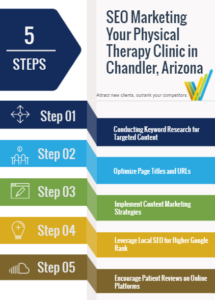If you’ve been following the latest trends in SEO, then you’ve probably already noticed that user experience (or UX for short) has made tremendous gains as a Google ranking factor. That’s right; Google is paying attention to more than just keywords and the structure of your content. As the online market becomes increasingly competitive, Google algorithms are responding by becoming more refined. What do you need to know to keep up with it all? Read on and find out!
What is UX for SEO?
User experience for search engine optimization (SEO) sounds complicated, but really it’s only a picture of how a user experiences your website. Their experience generally has two main components:
- Your website visitors’ perception of the quality of your content
- How fast and easy it is to find what they are looking for
SEO can become an essential tool in the online marketing toolkit when used correctly. It can lead to increased exposure for your products and business and ensure that visitors find you when they search for products like yours on their search engine results pages (or SERPs). Most importantly, a positive user experience gains the lasting trust of your visitor.
There are various stages of prioritizing UX for SEO, including:
Analyzing keywords and their usage in web content
Conducting keyword research
Deciding on which keywords you want to rank for
Writing web copy that is optimized for these keywords
On-page SEO tweaks that help get your site ranked better
Different companies employ varying SEO strategies; however, they all include thoughtful analysis of information gathered about users to improve their experience as much as possible.
How to Optimize UX for Your Website
User experience is one of the most important factors to consider when designing a website. It’s crucial to make sure that your site is usable and easy to understand. If you’re unsure how to start, this article will give you some ideas for UX design tips that will leave users satisfied with the result.
1. Map out your website user's journey
Successful websites have a clear goal behind them. They understand exactly where their target audience is coming from and what they want to achieve on the website. This understanding leads to the design of a user-friendly website that helps visitors achieve their goals in a streamlined fashion.
A significant part of the UX design journey is understanding user needs and wants. That’s why it’s essential to map out the different steps of your user’s journey. It’s important to ask, “What does my visitor need, and what do they want from this page?” When you can discover the answer to that question, you have your mission. User experience will drive both your site design and the direction of your SEO content creation.
2. Understand user search intent
Understanding the intent of a user is an integral part of any content marketing strategy. An excellent way to understand intent is to find out what people are searching for when they come to your website and provide quality content that answers those questions.
For example, if you’re a restaurant, you might have keywords like “restaurant near me” or “best food in town.” Searchers will potentially be looking for specific answers before they even land on your site. In this case, it’s important to answer their question quickly and efficiently with relevant content before they click away to another site in search of their answer.
As previously mentioned, Google is no longer crawling for keywords alone. Google wants to know, is the user’s query being satisfied? If so, then the user’s search will stop with your content. With their questions answered, there’s no need to continue browsing other websites or entering a new query into the search engine.
When you’re able to answer the “why” behind a user search, you’ve both solved their problem and figured out search intent. The more ways you can do that (custom images, professional videos, interactive graphics, etc.), the higher your site will rank in the SERPs.
3. Use interactive call-to-action buttons
Interactive call-to-action (CTA) buttons have a big impact on the conversion rates of landing pages. The longer the visitor stays on the page, the higher conversion rates increase. Many different types of interactive call-to-action buttons can capture leads and push visitors to take action.
One type is a button that pops up with a question and then prompts for an answer. For example: “What will your second choice be?” Another is a button with an arrow that encourages visitors to click for more information or download content. This type of button positively affects visitor engagement when done correctly.
Call-to-action buttons provide an interactive element on a web page. The CTA button is the final step in a user’s conversion process and should capture the attention of potential customers. A conversion button should have a clear, concise message that encourages users to take the desired action.
4. Optimize web pages for speed
Users are more likely to leave your website if they have to wait for the page to load. To keep their attention, it’s important to make sure that your website loads quickly.
One way you can make sure your site loads quickly is by compressing the graphics. Graphics can take a long time to load on certain devices, so you should reduce their size before uploading them to the site. You could also use a CDN that will serve those images from their servers instead of yours, making your page load faster.
Pages with long load or scroll times will frustrate visitors and lead to less time on site. To optimize for speed, minimize the number of plugins and scripts used on the site by turning off unnecessary ones, and reducing the size of your images will help improve page load times. The loading speed can also be increased by limiting HTTP requests, compressing images, and using image sprites.
The goal is to keep your web pages fast and straightforward, which keeps your visitor engaged with your content rather than losing them to another Google search.
5. Build a mobile-first user experience
Mobile-first design is an approach to web design that emphasizes the importance of the mobile user experience. It starts with designing a site for smaller screens but quickly adapts to larger ones as well.
One of the most important benefits of mobile-first design is that it lowers bounce rates; because people can find what they’re looking for and have a better experience on mobile devices, they will be less likely to leave your website. Mobile-first design also helps you save time and resources – you can write less content because it’s tailored more specifically for mobile users.
Lastly, mobile-first design also improves SEO performance: Google often overlooks sites that aren’t optimized for mobile devices, so this approach will set your site apart and help your rankings.
The Bottom Line: It's Time to Invest in User Experience Design
It’s never been a more critical time to invest in UX design for your business to thrive and compete in the modern world. It is imperative to stay on top of new trends, updates, and innovations that come out so that you’re always prepared when they enter the market.
User experience design is a vital aspect of any business that wants to grow and keep up with modern trends. It’s essential to evaluate new updates to provide the best quality product for your customers.
If you’re looking to build a lasting relationship with your customers, Visual Rankings is here to support you in achieving your goals. Allow us to keep up with Google’s ever-changing algorithms, so you don’t have to. Together, we’ll deliver a top-notch experience for your website visitors that will make your investment in UX design a worthwhile one.
Let’s get the conversation started. Give the experts at Visual Rankings a call today at (214) 681-3018.






